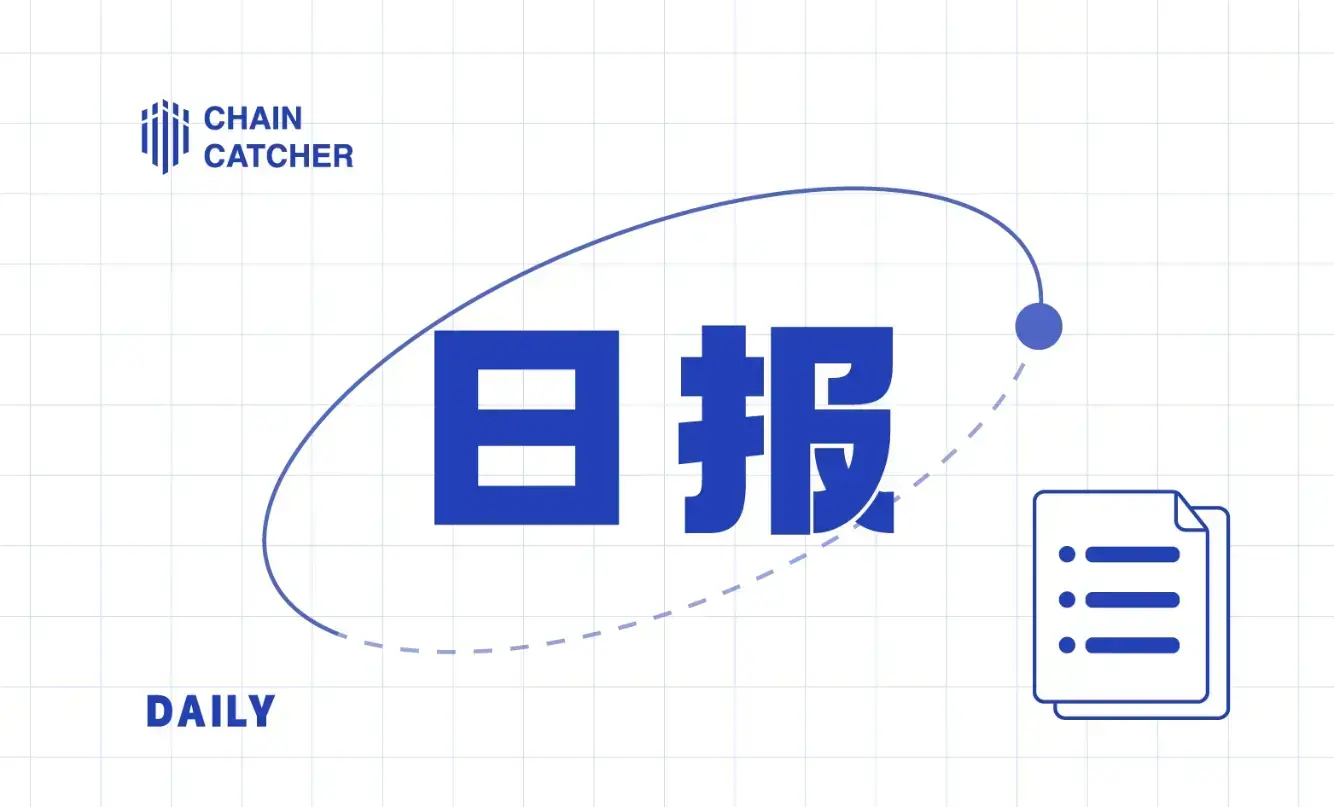Fortune Interview with Circle CEO: What is the value of USDC and other cryptocurrencies in the winter season, and what will future regulatory policies look like?
Original Title: Circle's CEO on the future of crypto regulation after the crypto winter and FTX's failure in 2022
Compiled by: Qianwen, ChainCatcher
In the latest episode of Fortune's Leadership Next podcast, co-hosts Alan Murray and reporter Michal Lev-Ram discussed with Circle CEO Jeremy Allaire the differences between the cryptocurrency crash of 2022 and the internet bubble of the late 1990s, the value of cryptocurrency beyond being a speculative asset, the future of cryptocurrency regulation, and how Circle's collaboration with the United Nations is empowering Ukrainian refugees through USDC, among other topics.
Michal Lev-Ram: We all heard about the massive cryptocurrency crash in 2022, with $2 trillion evaporating overnight. The FTX collapse triggered a series of headlines and other failures. In June 2022, Bitcoin's price fell to $18,000, just a year after it reached an all-time high of $69,000. So, what do we have left after the crash?
Murray: I think we have a perfect guest to talk about this topic, and that is the CEO of Circle. Last year, he was not spared from the disaster, as trading volume on the Circle platform halved. Unlike more speculative tokens, the stablecoin operated by the company, USDC, is pegged to the value of the dollar, and he believes this is an important component of the industry's future.
Lev-Ram: Yes, Jeremy has been in the tech industry for decades. He mentioned that, in his view, this is somewhat similar to what happened in the early days of the internet, where internet traffic was relatively low but valuations were high, and with the bursting of the internet bubble, there was a significant crash in the early stages of development.
An interesting point about Jeremy is that he has been advocating for cryptocurrency market regulation since he founded the company ten years ago. At that time, many of his peers in the market scoffed at his approach. But after the crash, it seems more and more people are aligning with his perspective.
Lev-Ram: Yes, like the early internet, more regulation could lead to a broader and more sustainable market. Clearly, larger companies will also get involved, and we are starting to see that happen, which Jeremy also discussed. We also had the opportunity to chat with him about his predictions for the industry's future and some very interesting applications. For some, cryptocurrency and digital payments are still seen as something evil. He will also talk about how Circle collaborates with the UN and NGOs to provide digital payment support for Ukrainian refugees through their stablecoin.
Murray: Overall, last year was a disaster for cryptocurrency, with about $2 trillion in wealth evaporating. After the FTX fallout, your company Circle performed better than most, but still lost about half its value. So, after all this, tell us what is left for cryptocurrency? What will the cryptocurrency landscape look like as we emerge from this mess?
Circle CEO Jeremy Allaire: As someone who has worked in internet technology for nearly 30 years, you must examine all cycles; that is their nature. You see, in every cycle, you go through a phase where capital and crowds flood into the investment space, with many unrealized expectations. Then, when you combine these investment cycles with tightening financial conditions, especially when you are dealing with technology closely tied to financial assets, you ultimately encounter a situation where you are essentially facing a very bad scenario.
We saw this during the rise and fall of the internet in the late 1990s and early 2000s. Looking back, where are we now in our development? We see a lot of value disappearing by half or 80%. However, you also see the other side of things, such as companies with sustainable development retaining strength, and governments, regulators, and others responding. I think this is very constructive and positive. Then, we will also see the output of technology investments.
If you only look at cryptocurrency, for example, 2017 was a boom year, 2018 was a crypto winter, and 2019 was a complete slump. But in reality, a lot of technological investments entered in 2017, and new things started to emerge in 2018, which are catalysts for growth in the next era.
Murray: Yes, let's first discuss the first part, and then we can talk about regulation. I understand your point; this is a stimulus for investment. But in this process, what have we learned about cryptocurrency being well-suited for speculation? How much do we know about its other potential values beyond being a speculative asset?
Circle CEO Jeremy Allaire: I think there are a few things. First, how to handle traditional currencies. In other words, government liabilities are expressed in the form of digital currency. How do people operate traditional currencies (not some newly invented currency, nor some new tokens tied to an invention by someone) online? Influenced by factors like interest rate environments, while people still intend to save money in banks, we also see a significant decrease in bank deposits by nearly $9 billion, and a large increase in people putting money into high-yield money market funds.
In terms of stablecoins, we are seeing similar dynamics; we see more and more developers, businesses, fintech companies, and remittance companies utilizing this infrastructure to build more and more things. Therefore, for us, the benefit is fast, global, and interoperable dollar settlements, knowing that the dollar is a strong currency.
On the other hand, the demand from emerging markets with weak currencies remains strong. Companies like SAP are integrating USDC settlements into their corporate payment methods and incorporating it into some of the world's leading remittance companies, making it a core settlement service like Western Union. Some large companies are also taking action, such as Visa and Mastercard announcing the use of USDC as a settlement measure. This technology has made significant progress.
Since we held a major event last September, our mantra has been to bring real value to the real world through technology. We advocate that we must move from the speculative value phase of cryptocurrency to the practical value phase. And the practical value phase must be rooted in real currency and real technological availability. I think this sets us apart from many other companies that have focused on speculative investments, creating trading exchanges, and trying to get people to buy the latest tokens.
Lev-Ram: Can you elaborate more on USDC? Also, besides USDC, we have other stablecoins; can you discuss the deployment and application of stablecoins?
Circle CEO Jeremy Allaire: The fundamental vision behind USDC dates back to when we founded the company ten years ago. At that time, our idea was that you could express what we consider traditional currency, which is government debt currency, in the form of digital currency. People could use them on the public internet through open protocols, just like we established protocols for email, web information exchange, or voice calls, allowing any device to connect to these protocols, facilitating the flow of information and communication.
So, about five years ago, we launched USDC. It is essentially a protocol set up for the dollar on the internet. Technically, this was not possible ten years ago; it only became truly feasible five years ago. First, we had already become one of the most regulated companies in the industry, working with payment and state banking regulators across the U.S. to obtain licenses for electronic money services. Similarly, in the EU and the UK, we can issue products considered stored value electronic money. Just like when you use PayPal, Cash App, or traditional remittance products like Western Union, these electronic money units are essentially regulated.
Many people's first misunderstanding is that these products are unregulated. In fact, we have been regulated for a long time, and we worked with regulators to launch this product, rather than being tied to a specific company or wallet. As a medium of exchange on the internet, we have completed over $11 trillion in transactions. What I want to say is that we are still in the early stages of development, and the future is full of possibilities. It's like discussing how much internet traffic there was in 2002 and then imagining how much it would be 20 years later. In my view, this is still a very early technology. But it is entering what I call a broadband moment, with many factors contributing to this moment.
Murray: Since the COVID-19 pandemic, our views on work, work locations, work hours, and work methods have been constantly changing. Is this a problem for businesses? Or is it a huge opportunity for them?
Girzadas: This is a huge opportunity. Although I think the answer is not clear-cut. It is certain that this will bring a series of profound challenges. But ultimately, it could shape a whole new workplace, especially in the face of more long-term systemic talent, labor constraints, and limitations, allowing people to maximize their potential in the workforce, enabling them to be their true selves at work, increasing productivity levels, and feeling everything they do. But I think these patterns are not clear. We have seen many attempts, such as around hybrid models, and to what extent we can truly achieve in-person work. This also involves the effects of technology being embedded in the workplace, allowing employees and work teams to feel supported and assisted, as well as cultural elements like diversity, equity, and inclusion, and how to make people feel supported so they can be their true selves at work.
Companies will innovate around these factors and find novel ways to combine them to attract talent, and businesses will rely on innovation in the workplace and workflows to differentiate themselves.
Lev-Ram: Circle has long believed that companies and markets need regulation, which is not necessarily a popular view in the cryptocurrency community. So, I wonder if you could give us a deeper insight into why you believe U.S. legislation will specifically regulate stablecoins and the specific work you have been advocating for?
Circle CEO Jeremy Allaire: This goes back to ten years ago when the U.S. government actually started regulating this. The Treasury issued regulations stating that if you want to play a role between the banking system and these virtual currency technologies, you must be regulated as a financial institution, and you must be responsible for understanding your customers, regulating transactions, handling terrorism risks, sanctions, tax evasion, and all these things. This was the law ten years ago, which set a series of requirements for any company wanting to play a role between the banking system, blockchain, and digital assets. This is the starting point for this currency transmission regulation and money service regulation. This is a big topic and laid the groundwork for our eventual launch of USDC, as it falls under that regulatory framework.
In recent years, stablecoins have developed rapidly. Global regulators are paying attention to stablecoins and the cryptocurrency market. You can think of them as two different things. The best representatives of these trading markets are finance, or specifically Coinbase and trading sites. Stablecoins are also an example; they are an innovation in payment systems and a monetary innovation. A few years ago, global regulators began to worry that these things would grow, that they would be widely used, and that they would closely integrate with the existing financial system. Therefore, there has been a strong call for regulatory requirements, which the U.S. is leading.
The U.S. is advancing regulation through the G7 and subsequently the G20 (there is an organization called the Financial Stability Board that oversees or formulates all G20 financial regulatory policies). The U.S. government has told Congress that we must do this; it is urgent. This is what Janet Yellen (the U.S. Treasury Secretary) said, implying that it is urgent for Congress to take action and legislate, or else there could be runs leading to substantial losses.
In fact, we have identified significant issues, and risks have been confirmed. For example, the collapse of Terra and the prevalence of Ponzi schemes. But efforts to push for legislation still exist. Since these proposals were made, we now see that almost all major G20 members have developed or are developing regulations related to stablecoins, including Japan, the UK, the EU, Singapore, Hong Kong, the UAE, and the U.S. Congress may also draft a law targeting the payment and stablecoin issuer population. So, there has been significant progress in this area.
Murray: You said last month that the U.S. must make a choice: to make the dollar the foundation of internet currency or allow other countries to take the lead. Why is this so important? Why should we care about this?
Circle CEO Jeremy Allaire: The prominent role of the dollar has benefited the U.S. immensely. The dollar provides low-cost borrowing for households and businesses. For the government, the dollar creates favorable conditions for U.S. global trade. It creates a mechanism of soft power worldwide. This dollar hegemony has existed for quite some time.
But now this hegemony is under significant threat. We often hear about new alliances forming to create another payment system. Currency competition is turning into technology competition. The question is, what do people want internet currency to be? Do they want it to be a digital dollar? Or do they want different currencies, like a digital euro or digital yuan? For the U.S., it needs to address this proactive threat while also embracing the opportunity—promoting the robust development of electronic money through good regulation and free market competition in a rules-based free market system, and unleashing the technological power of market capitalism globally, allowing the digital dollar to sweep the world through this technological revolution, becoming the foundation for the next generation of business and finance.
Murray: What does the U.S. need to do to seize this opportunity? What are the requirements?
Circle CEO Jeremy Allaire: Very specifically, the U.S. needs to establish a federal regulatory framework for payment stablecoins (that is, digital dollars issued by private sector companies). These private companies ensure the safety and soundness of stablecoins by holding one-to-one assets like banks do, while banks re-collateralize the currency and take on currency risk. Therefore, this requires the creation of a full-reserve digital dollar system that can operate on this evolving internet infrastructure. This is happening. Thus, it is about establishing a strong federal regulatory standard that the Federal Reserve can set, so that everyone in the world using these standards, whether Circle, PayPal, or the next company wanting to do this, understands what these standards are. They are essentially cash on the balance sheet, cash for someone in business activities. Then, people can release funds.
Lev-Ram: While there is hope for progress in regulation, we also see more traditional financial players joining the ranks. What are your thoughts on this? Do you think companies like Circle are better positioned to lead the way? Clearly, traditional financial institutions have large customer bases and significant influence; how do you view their role now?
Circle CEO Jeremy Allaire: Yes, I think this goes back to our earlier discussion. A stablecoin bill was recently passed in the House. In fact, Congress and the White House are negotiating some details. So, this has sent a signal to many that regulation is happening. As things become clearer, major companies will start to join in, which is a positive development. This is exactly what the U.S. government hopes for; it wants big companies to get involved.
For us, it is clear that we are no longer a startup; we have been around for ten years, and our business has grown quite substantial. But we also welcome competitors entering the space, and industry standards are becoming clearer. My expectation is that this situation of financial institutions entering the market is happening not only in the U.S. but everywhere. For example, Japan has introduced new stablecoin legislation. In the market, large internet companies, fintech companies, and banks are all trying to launch stablecoins. The EU also has models for launching stablecoins.
We believe it is very important to have a trusted, neutral market infrastructure. That is our positioning; we see ourselves as building protocols, APIs, and trusted neutral components. We do not favor a specific blockchain, exchange, or payment business we operate. We want everyone to be able to use these things.
Lev-Ram: One interesting application case of stablecoins we encountered is your collaboration with NGOs and the UN to enable Ukrainian refugees to use USDC. Can you explain how this work is being carried out?
Circle CEO Jeremy Allaire: Fundamentally, the promise of this project is to enable anyone in the world with a mobile phone to receive, send, and transact secure digital currency at internet speed and with the cost efficiency of internet data, which is almost zero cost. This can drive true financial inclusion and lower remittance costs, which are a special tax for those who need money the most, and it can also open up better forms of humanitarian aid.
Therefore, we have a comprehensive program called "Circle Impact," a significant part of which is working with global NGOs to make it easier for these organizations to distribute digital cash to those who need funding the most. To this end, we have collaborated with several UN agencies, including the UN High Commissioner for Refugees, and we have also partnered with many other top international NGOs, essentially enabling them to use USDC to directly provide digital cash payments to people with mobile phones, including Ukrainian refugees, women in Afghanistan, doctors in Venezuela, and earthquake victims in Syria and Turkey. I mean, these are very important matters.
I believe global aid organizations are very excited about this because cash can easily lead to corruption and theft, so much funding cannot reach those who need it. This payment method provides them with a way to achieve that goal. Additionally, we are also collaborating with global cash-out providers like Western Union, so that no matter where you are, you can convert digital cash into local currency and cash.
Murray: You mentioned before that perhaps these types of transactions only account for 5% of the dollar market or other markets. But what will the world look like ten years from now? Will the world be better because of the actions you are taking today? Can you paint a picture of the social value of your projects?
Circle CEO Jeremy Allaire: First of all, many of our views on how money flows will change, essentially resembling the form of internet development—we will no longer think about long-distance calls or sending letters because we can access all knowledge in the world at no cost, and we can directly video call others. The same thing will happen with money; the idea of cross-border payments will sound as absurd as the idea of cross-border email sounds today. In other words, money will flow at internet speed, essentially at no cost. Any device, any software, any hardware can use it. I think the societal impact of this is enormous. I believe that if we can make money flow in the same way, the speed of money flow will explode. And when you have a high-speed currency circulation, it will clearly lead to increased economic activity and economic opportunities.
Murray: A quick follow-up question: I live in Greenwich, Connecticut, where there are many mansions bought by those who collect fees/tolls in financial transactions. If your vision is correct, then these fees should decrease, and the houses in Greenwich should become smaller. Do you think that is our ultimate expectation?
Circle CEO Jeremy Allaire: I don't know if the houses in Greenwich will get smaller, as that is something the community should consider. But I think yes, the fee structures will change. The unit economics of media, communications, publishing, and retail will change, and product quality will improve tenfold. Moreover, the net output of economic payment activities in the global economy will grow. Therefore, it will actually bring about the law of large numbers, and some very significant scale enterprises will emerge in this process.
I believe a very critical part of the financial system is expanding credit, which is what I call the time value of money, involving those who need money now but have none and those who have money but do not need it. I believe that this high-speed digital currency, combined with programmable things like smart contracts on the blockchain, will also generate powerful new means to deliver credit to those who need it globally, to the businesses and families that need it.
Murray: Your perspective is inspiring. Now let's move from the crypto winter to the crypto spring!
Lev-Ram, Murray: Perhaps to the crypto summer.
Circle CEO Jeremy Allaire: When cryptocurrency truly becomes popular, people will no longer call it cryptocurrency. We rarely say "internet" anymore. We are just talking about the internet or the main technologies we are using, so I think the day it quietly enters our lives is the day it succeeds.











